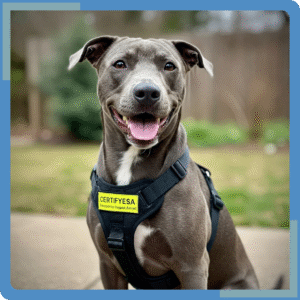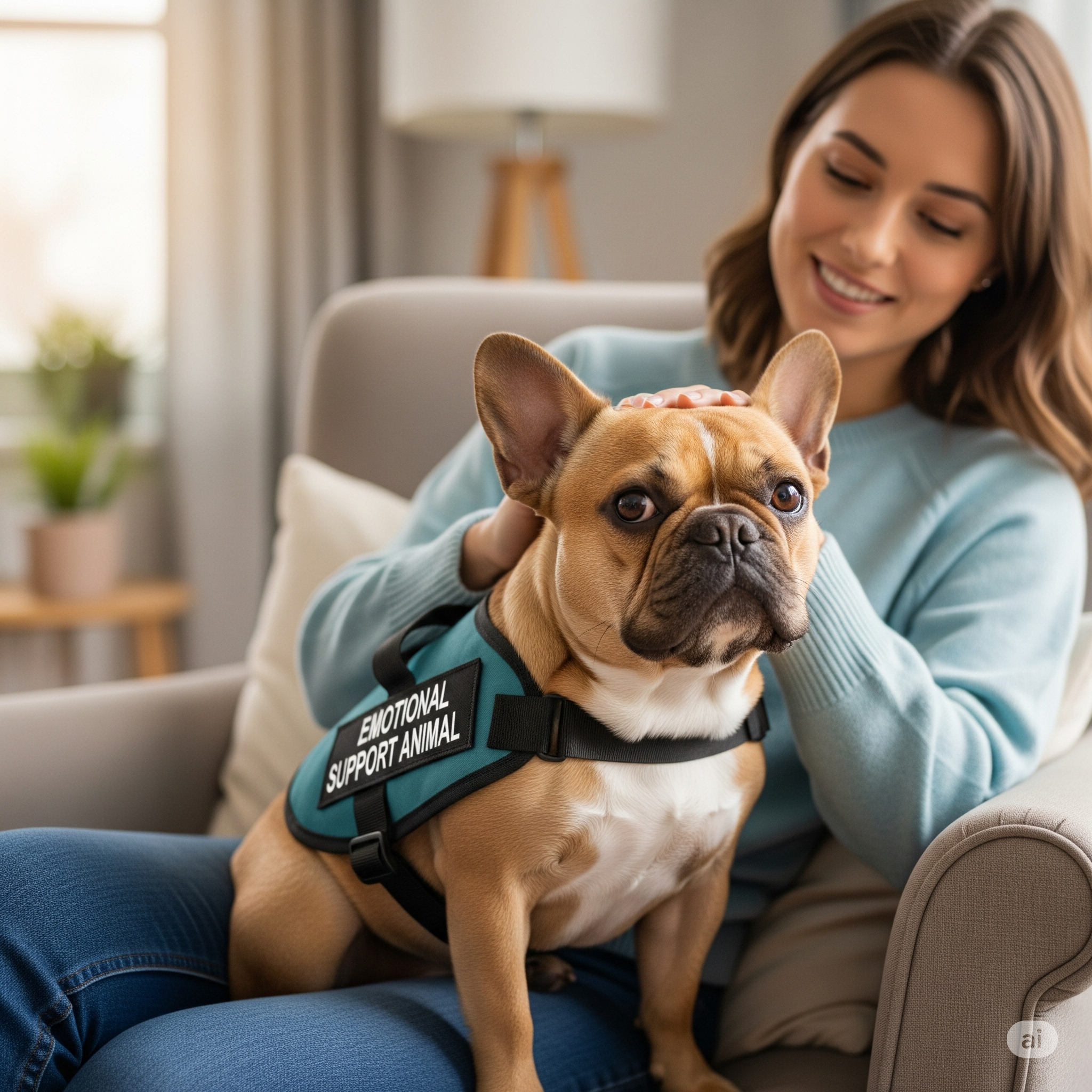The Lifesaving Canine Companions:
In a world where allergies can present life-threatening challenges, allergy detection dogs have emerged as an essential tool, particularly for families with children who have severe, life-altering allergic reactions. These specially trained dogs can detect harmful allergens, such as peanuts, gluten, dairy, and even insect venom, before they can harm their owners. For parents of children with these serious allergies, the safety and peace of mind these dogs provide is invaluable.
In this blog post, we will explore how allergy detection dogs work, why they are crucial for children with severe allergies, and how you can get one for your child. With a growing interest in these remarkable service dogs, this article aims to provide comprehensive information that can help families make informed decisions regarding their health and safety.
What are Allergy Detection Dogs?
Allergy detection dogs are service dogs trained to detect specific allergens that can cause life-threatening reactions, such as anaphylaxis. These canines have an extraordinary sense of smell—estimated to be 10,000 to 100,000 times more sensitive than humans (American Kennel Club, 2021). This keen sense of smell allows them to detect allergens in a wide range of environments, including public spaces, schools, airports, and homes.
The training process for allergy detection dogs is rigorous and typically takes up to 18 months. These dogs are trained to sniff out the allergens, alert their owner to the presence of the allergen, and in some cases, help them avoid potential exposure by guiding them to a safer area.
How Do Allergy Detection Dogs Work?
Allergy detection dogs are trained to sniff out allergens such as:
- Peanuts and peanut-based products
- Gluten (wheat, barley, and rye)
- Dairy (milk, cheese, etc.)
- Eggs
- Insect venom (bee or wasp stings)
- Tree nuts (like almonds, walnuts, and cashews)
Once the dog identifies the scent of an allergen, they are trained to alert their owner in a variety of ways, including by:
- Tapping or pawing: The dog might tap its paw on the ground or on the person’s leg as a signal.
- Barking or whimpering: Some dogs may bark to draw attention to the allergen.
- Pointing or nudging: The dog may nudge or point towards the area where the allergen is present.
The dog’s alert signals are intended to give the allergic person enough time to react, such as avoiding the allergen or using medication like an epinephrine injection if necessary.
Why Allergy Detection Dogs are Vital for Children with Severe Allergies
For children with severe allergies, the presence of an allergen in their environment can be a frightening and even deadly event. While an adult might be able to read labels, avoid certain foods, or stay vigilant in public places, young children may not have the ability to detect allergens or understand the dangers they pose. This is where allergy detection dogs step in.
- Increased Safety in Public Spaces
Public places like schools, parks, grocery stores, and restaurants can be fraught with potential allergens. A child with a peanut or gluten allergy may inadvertently come into contact with these substances, and their reaction could be severe. Having an allergy detection dog with them offers an extra layer of protection, as the dog can detect the allergen before it even comes into contact with the child (Service Dogs for Allergies, 2023).
- Peace of Mind for Parents
Parents of children with severe allergies often experience anxiety about their child’s safety. There are constant concerns about accidental exposure to allergens, particularly when the child is in someone else’s care or out in public. Knowing that an allergy detection dog is on hand to alert the child or their caregiver to the presence of an allergen provides much-needed peace of mind. In many cases, the dog can alert the child well in advance, preventing a potentially life-threatening situation (National Institute of Allergy and Infectious Diseases, 2022).
- Training for School and Social Environments
In a school environment, it’s essential for children to learn to interact with peers, but food allergies can complicate this. Many schools have peanut or nut-free policies, but these policies are not foolproof, and accidental exposure is still a risk. An allergy detection dog can be especially beneficial in helping children navigate school lunchrooms, classrooms, or extracurricular activities. With the dog’s alert system in place, caregivers and teachers can act quickly and prevent dangerous allergic reactions (Service Dogs for Allergies, 2023).
- Therapeutic Bonding and Emotional Support
Beyond their physical role in detecting allergens, allergy detection dogs also provide emotional support to children. These dogs often become a child’s best friend, offering a sense of comfort and reassurance during stressful situations. For children who suffer from severe allergies, the emotional support provided by the dog can be just as important as their physical role in detecting allergens (American Kennel Club, 2021).
Types of Allergens Allergy Detection Dogs Can Detect
Allergy detection dogs are capable of detecting a wide range of allergens that pose significant health risks. Some of the most common allergens that these dogs are trained to detect include:
- Peanut Allergy Detection
Peanut allergies are one of the most common and severe food allergies, particularly in children. A reaction to peanuts can lead to anaphylaxis, a potentially life-threatening condition. Peanut proteins are difficult to avoid, as peanuts are often used in cooking or present in processed foods. An allergy detection dog trained to sniff out peanuts can alert the child before they come into contact with peanuts or peanut-based products (National Institute of Allergy and Infectious Diseases, 2022).
- Gluten (Wheat, Barley, Rye) Allergy Detection
Gluten allergies, including celiac disease, affect many people, especially children. Gluten is found in many foods, from bread to processed snacks, making it hard to avoid. An allergy detection dog trained to sniff out gluten can be crucial in preventing accidental exposure and ensuring that children with gluten sensitivities remain safe (Service Dogs for Allergies, 2023).
- Dairy Allergy Detection
Dairy allergies are common among children and can trigger severe allergic reactions, such as hives, swelling, or anaphylaxis. Milk and other dairy products are widespread in foods, and even trace amounts of dairy can cause serious reactions in allergic individuals. With an allergy detection dog, children can safely navigate environments that may contain hidden dairy ingredients (American Kennel Club, 2021).
- Egg Allergy Detection
Eggs are a common food allergen, especially in children. They are found in many food products, such as baked goods, pasta, and even sauces. An allergy detection dog can help identify the presence of eggs in food or other environments, helping children avoid this allergen before any harm is done (Service Dogs for Allergies, 2023).
- Insect Venom Detection (Bee/Wasp Stings)
Insect stings, particularly from bees and wasps, can cause severe allergic reactions, including anaphylaxis. Allergy detection dogs trained to alert to the presence of bees, wasps, or other dangerous insects can help children avoid dangerous stings, especially when playing outdoors or in areas where insects are prevalent (National Institute of Allergy and Infectious Diseases, 2022).
How to Get an Allergy Detection Dog for Your Child
For families interested in acquiring an allergy detection dog, the process involves several important steps:
- Find a Reputable Service Dog Organization
There are several organizations that specialize in training allergy detection dogs. These organizations typically work with service dog trainers to create a custom training plan for your child’s specific needs. It’s essential to choose an organization that is experienced in training dogs for allergy detection, as the process requires specialized knowledge (American Kennel Club, 2021).
- Assess Your Child’s Allergies
Before choosing a dog, the first step is to assess which allergens need to be detected. Some children may require dogs trained for a specific allergen, such as peanuts or gluten, while others may need a more generalized allergy detection dog. A healthcare provider can help identify the best plan for your child’s needs (Service Dogs for Allergies, 2023).
- Training and Matching
Once a dog is selected, it will undergo rigorous training to identify the specific allergens. The matching process is also important to ensure that the dog is compatible with your child’s personality and needs. Some dogs are better suited to certain types of families or environments, so it’s essential to work with trainers who understand the nuances of this process (Service Dogs for Allergies, 2023).
- Ongoing Support and Maintenance
After the dog is placed with your family, ongoing support and training are crucial to ensure that the dog’s skills remain sharp. Additionally, allergen sensitivities can change over time, so it’s important to maintain regular check-ins with trainers and healthcare providers (American Kennel Club, 2021).
Conclusion
Allergy detection dogs are a revolutionary tool for families with children who have severe allergies. By using their incredible sense of smell, these dogs can detect harmful allergens before they pose a risk, providing safety, comfort, and peace of mind. For children with life-threatening allergies to peanuts, gluten, dairy, eggs, or insect venom, these dogs are more than just service animals—they are life-saving companions. Investing in an allergy detection dog can dramatically improve a child’s quality of life, reducing the fear and anxiety associated with living with a severe allergy.
As awareness grows about these incredible dogs and the training that goes into their development, more families are seeking out allergy detection dogs as a way to safeguard their children’s health and well-being. If your child is affected by severe allergies, consider speaking with a service dog organization to explore how an allergy detection dog can help keep them safe and give you the peace of mind you deserve.

References
American Kennel Club. (2021, June 22). What is a service dog?. https://www.akc.org/expert-advice/training/what-is-a-service-dog/
National Institute of Allergy and Infectious Diseases. (2022, October). Food allergy. https://www.niaid.nih.gov/diseases-conditions/food-allergy
Service Dogs for Allergies. (2023, May 5). How allergy detection dogs help families with severe allergies. https://www.servicedogsforallergies.org/how-allergy-detection-dogs-help





